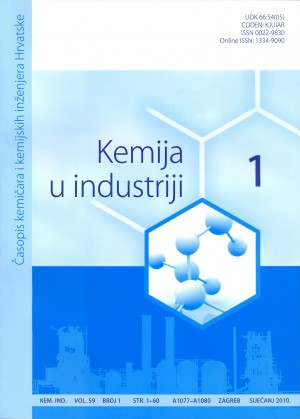
Hundred years of Crystallography
Title: Hundred years of Crystallography (original title in Croatian: Stogodišnjica rendgenske kristalografije)
Authors: Biserka Kojić-Prodić and Kresimir Molčanov
Reference: Chemistry in Industry (original title of the journal: Kemija u industriji), 62 (2013) 247-260.
Language: Croatian (abstract in English)
"The important thing in science is not so much to obtain new facts as to discover new ways of thinking about them", W. L. Bragg
SUMMARY
The 100th anniversary of X-ray crystallography dates back to the first X-ray diffraction experiment on a crystal of copper sulphate pentahydrate. Max von Laue designed the theoretical background of the experiment, which was performed by German physicists W. Friedrich and P. Knipping in 1912. At that time, the mathematical formulation of the phenomenon and the fundamental concepts of crystallography were subjects of mineralogy. Altogether, they facilitated the development of methods for determination of the structure of matter at the atomic level. In 1913, father and son Bragg started to develop X-ray structure analysis for determination of crystal structures of simple molecules. Historic examples of structure determination starting from rock salt to complex, biologically important (macro)molecules, such as globular proteins haemoglobin and myoglobin, DNA, vitamin B12 and the recent discovery of ribozyme, illustrate the development of X-ray structural analysis. The determination of 3D structures of these molecules by X-ray diffraction had opened new areas of scientific research, such as molecular biophysics, molecular genetics, structural molecular biology, bioinorganic chemistry, organometallic chemistry, and many others. The discovery and development of X-ray crystallography revolutionised our understanding of natural sciences – physics, chemistry, biology, and also science of materials. The scientific community recognised these fundamental achievements (including the discovery of X-rays) by awarding twenty-eight Nobel prizes to thirty-nine men and two women. The explosive growth of science and technology in the 20th and 21st centuries had been founded on the detailed knowledge of the three-dimensional structure of molecules, which was the basis for explaining and predicting the physical, chemical, biological and pharmacological properties of molecules. A most recent and striking example is the still unfinished story of graphenes, occupying the front pages of leading scientific journals, such as Science, Nature, Nature Materials, Nature Nanotechnology, Nature Chemistry and Nature Physics. Contemporary crystallographic research covers numerous scientific domains, and it is a very innovative area of science. Who would dare to be a prophet and foresee future findings?
Click here to download the full article (PDF, 3.4 MB)
| Contact | Stanko Popovic spopovic@phy.hr |
| URL | http://hrcak.srce.hr/index.php?show=clanak&id_clanak_jezik=154669 |
| Category | publications |


